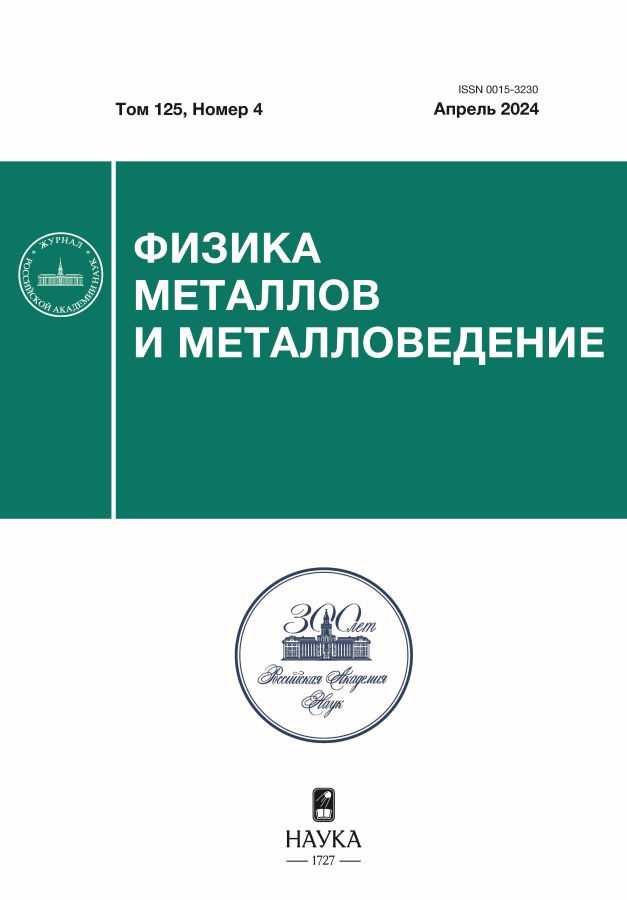Structure and Magnetic Properties of Iron Oxide Nanoparticles Subjected to Mechanical Treatment
- Авторлар: Kurlyandskaya G.V.1, Burban E.A.1, Neznakhin D.S.1, Yushkov A.A.1, Larrañaga A.2, Melnikov G.Y.1, Svalov A.V.1
-
Мекемелер:
- Ural Federal University
- Universidad del País Vasco UPV/EHU
- Шығарылым: Том 125, № 4 (2024)
- Беттер: 430-437
- Бөлім: ЭЛЕКТРИЧЕСКИЕ И МАГНИТНЫЕ СВОЙСТВА
- URL: https://innoscience.ru/0015-3230/article/view/662862
- DOI: https://doi.org/10.31857/S0015323024040079
- EDN: https://elibrary.ru/WQSDVL
- ID: 662862
Дәйексөз келтіру
Аннотация
Iron oxide nanoparticles have been fabricated using the electric wire explosion (EWE) technique. The structure and magnetic properties of the nanoparticles have been analyzed before and after mechanical grinding in a ball mill for different time periods, focusing on potential bioapplications. The phase composition of the nanoparticles (70% Fe3O4, 30% Fe2O3) has remained unchanged despite the mechanical effects. The average nanoparticle size has not been affected either. The observation of the Verwey transition in the studied nanoparticles, along with the structural data, provides a better understanding of the physical properties of EWE ensembles of nanoparticles in different states. The analysis of the structure and magnetic properties reveals the development of a material with a high level of internal stress. This finding may be of interest for bioapplications due to its potential impact on the material performance.
Толық мәтін
Авторлар туралы
G. Kurlyandskaya
Ural Federal University
Хат алмасуға жауапты Автор.
Email: galinakurlyandskaya@urfu.ru
Ресей, Ekaterinburg
E. Burban
Ural Federal University
Email: galinakurlyandskaya@urfu.ru
Ресей, Ekaterinburg
D. Neznakhin
Ural Federal University
Email: galinakurlyandskaya@urfu.ru
Ресей, Ekaterinburg
A. Yushkov
Ural Federal University
Email: galinakurlyandskaya@urfu.ru
Ресей, Ekaterinburg
A. Larrañaga
Universidad del País Vasco UPV/EHU
Email: galinakurlyandskaya@urfu.ru
Испания, Leioa
G. Melnikov
Ural Federal University
Email: galinakurlyandskaya@urfu.ru
Ресей, Ekaterinburg
A. Svalov
Ural Federal University
Email: galinakurlyandskaya@urfu.ru
Ресей, Ekaterinburg
Әдебиет тізімі
- Фролов Г.И., Бачина О.И., Завьялова М.М., Равочкин С.И. Магнитные свойства наночастиц 3d-металлов // ЖТФ. 2008. Т. 78. Вып. 8. С. 101–106.
- Pankhurst Q.A., Connolly A.J., Jones S.K., Dobson J. Applications of Magnetic Nanoparticles in Biomedicine // J. Phys. D. 2003. V. 36. P. R167–R181.
- Бляхман Ф.А., Макарова Э.Б., Шабадров П.А., Фадеев Ф.А., Шкляр Т.Ф., Сафронов А.П., Комогорцев С.В., Курляндская Г.В. Магнитные наночастицы как фактор, определяющий биосовместимость феррогелей // ФММ. 2020. Т. 121. Вып. 4. С. 339–345.
- Buznikov N.A., Safronov A.P., Orue I., Golubeva E.V., Lepalovskij V.N., Svalov A.V., Chlenova A.A., Kurlyandskaya G.V. Modelling of magnetoimpedance responce of thin film sensitive element in the presence of ferrogel: Next step toward development of biosensor for in-tissue embedded magnetic nanoparticles detection // Biosens. Bioelectron. 2018. V. 117. P. 366–372.
- Grossman J.H., McNeil S.E. Nanotechnology in cancer medicine // Phys. Today. 2012. V. 65. P. 38–42.
- Khawja Ansari S.A.M., Ficiara E., Ruffinatti F.A., Stura I., Argenziano M., Abollino O., Cavalli R., Guiot C., D’Agata F. Magnetic iron oxide nanoparticles: Synthesis, characterization and functionalization for biomedical applications in the central nervous system // Mater. 2019. V. 12. P. 465.
- Sedoi V.S., Ivanov Y.F. Particles and crystallites under electrical explosion of wires // Nanotechnology. 2008. V. 19. P. 145710.
- Kurlyandskaya G.V., Bhagat S.M., Safronov A.P., Beketov I.V., Larranaga A. Spherical magnetic nanoparticles fabricated by electric explosion of wire // AIP Adv. 2011. V. 1. P. 042122.
- Safronov A.P., Samatov O.M., Tyukova I.S., Mikhnevich E.A., Beketov I.V. Heating of polyacrylamide ferrogel by alternating magnetic field // J. Magn. Magn. Mat. 2016. V. 415. P. 24–29.
- Beketov I.V., Safronov A.P., Medvedev A.I., Alonso J., Kurlyandskaya G.V., Bhagat S.M. Iron oxide nanoparticles fabricated by electric explosion of wire: Focus on magnetic nanofluids // AIP Adv. 2012. V. 2. P. 022154.
- Alcala M.D., Criado J.M., Real C., Grygar T., Nejezchleva M., Subrt J., Petrovsky E. Synthesis of nanocrystalline magnetite by mechanical alloying of iron and hematite // J. Mater. Sci. 2004. V. 39. P. 2365–2370.
- Rawers J.C., Govier D., Cook D. Microstructure development and stability of iron powder mechanically alloyed in a nitrogen atmosphere // J. Mater. Synth. Proces. 1995. V. 3. P. 263–272.
- Аплеснин С.С., Баринов Г.И. Орбитальное упорядочение в магнетике выше температуры Вервея, индуцируемое давлением // ФТТ. 2007. Т. 49. Вып. 10. С. 1858–1861.
- Verwey E.J.W., Haayman P.W. Electronic conductivity and transition point of magnetite (Fe3O4) // Physica. 1941. V. 8. P. 979–987.
- Zuo J.M., Spence J.C.H., Petuskey W. Charge ordering in magnetite at low temperatures // Phys. Rev. B. 1990. V. 42. P. 8451–8464.
- Мельников Г.Ю., Лепаловский В.Н., Сафронов А.П., Бекетов И.В., Багазеев А.В., Незнахин Д.С., Курляндская Г.В. Магнитные композиты на основе эпоксидной смолы с магнитными микро- и наночастицами оксида железа: фокус на магнитное детектирование // ФТТ. 2023. Т. 65. Вып. 7. С. 1100–1108.
- Vives S., Gaffet E., Meunier C. X-ray diffraction line profile analysis of iron ball milled powders // Mater Sci. Eng. A. 2004. V. 366. P. 229–238.
- Bohra M., Agarwa N., Singh V. A short review on Verwey transition in nanostructured Fe3O4 // J. Nanomater. 2019. V. 19. Article ID 8457383. 18 p.
Қосымша файлдар















